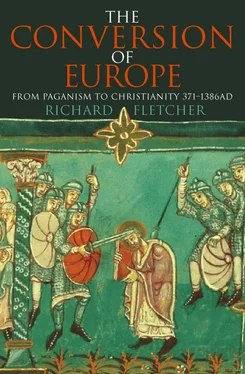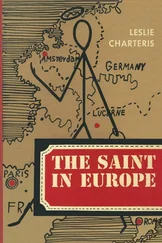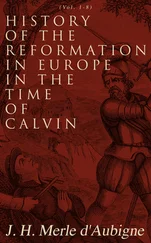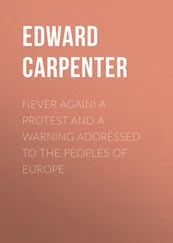Ninian himself is not mentioned by name until the eighth century, when Bede devoted two passing sentences to him in his Ecclesiastical History of the English People. Bede was, as I have said in Chapter 1, a very conscientious scholar who in this instance dutifully reported what he had heard from persons whom he regarded as reliable sources. Among them was quite probably the English Bishop Pehthelm of the recently revived see of Whithorn. However, Bede was careful to qualify his report with a hint of uncertainty: ‘as they say’. What Bede had been told was that Ninian was a Briton who had received religious instruction at Rome, had gone as a bishop to Whithorn, where he had built a church of stone dedicated to St Martin of Tours, had converted the southern Picts to Christianity and had on his death been buried at Whithorn. This report presents all sorts of difficulties. It is generally though not universally agreed that some of what Bede tells us is more likely to represent what the eighth century wanted to believe about Ninian than any historical reality. As we shall see in due course, the eighth century was more interested in Roman connections and missions to barbarians than was the fifth. It may not be irrelevant that Bishop Pehthelm was a correspondent of the great St Boniface, strenuous upholder of Roman direction of the church’s overriding duty of mission to pagan barbarian peoples. All that is reasonably certain is that a Christian community had grown up beyond the imperial frontier in Britain and that Ninian had been appointed its bishop.
Our second instance of a bishop sent beyond the western extremities of the empire is a mite less shadowy. The contemporary chronicler named Prosper of Aquitaine – he whose De Vocatione Omnium Gentium occupied us briefly in Chapter 1 – informs us in his annal for the year 431 that (in his own words) ‘Palladius, consecrated by Pope Celestine, is sent as their first bishop to the Irish believers in Christ.’ Here at last is some ‘hard’ information. Prosper had visited Rome in that very year, 431, to consult Pope Celestine on a matter of theological controversy. He could even have met Palladius on the occasion of the latter’s visit to Rome for episcopal consecration. We may be as certain as we can be of anything in this period that in the year 431 an Irish Christian community received Palladius as its first bishop.
Ireland, notoriously, had never formed a part of the Roman empire. But as with Gothia or Galloway there was a degree of cultural interaction between Ireland and the neighbouring provinces which may plausibly be invoked in an investigation of Irish Christian origins. There were trading relations of long standing between Britain and Ireland. As long ago as the first century Tacitus could observe in his memoir of his father-in-law Agricola that Ireland’s harbours were known to the Roman forces in Britain ‘through trading and merchants’. A variety of artefacts provides archaeological confirmation of lively commerce between eastern and southern Ireland and her neighbours to the east, Britain and quite possibly Gaul too, throughout the Roman period and beyond. Irish mercenaries served in the Roman army in Britain. Refugees from Britain sought asylum in Ireland. Pirates from Ireland were raiding the western seaboard of Britain from the third century onwards, for the same reasons that Ukrainian Goths were striking deep into Asia Minor. Forts such as those at Cardiff, Caer Gybi on Anglesey, Lancaster and Ravenglass were built to protect civilian Britain from these predators. In 367 an unprecedented alliance of Irish, Picts (from Scotland) and Saxons (from north Germany) overcame the defences of Britain and plundered the provinces for nearly two years. A chieftain remembered in Irish legend as Niall Noígiallach, Niall ‘of the Nine Hostages’, was raiding Britain in the late fourth century.
There was in addition Irish settlement in south-western Wales, the modern Dyfed, then known as Demetia, from perhaps as early as the fourth century. The evidence for this comes from three different types of source. There are memorial stones in the area inscribed with Irish names, often in the linear script known as ogham , which seems to have originated in the south-east of Ireland at about this period. There are place-names with Irish elements, hard to date, whose distribution to a great degree overlaps with the inscribed stones. And there are legends, which may contain a kernel of historical truth, about the fourth-century migration of a tribe called the Déisi from south-eastern Ireland to Wales. It is by means of these settlers, presumed to have maintained contact with their kinsfolk in Ireland, that elements of Romano-British culture are most likely to have seeped back there. One such element was language, the borrowing of a number of Latin loanwords into Old Irish. Another was religion: the Irish settlers were near neighbours of Caerleon-on-Usk with its Diocletianic martyrs Aaron and Julius, and its Christian landed gentry in the villas of Gwent and Glamorgan. It was probably from south Wales that Christianity first came to Ireland.
It was to these Irish Christians that Palladius was sent in 431. Who was he? A person of the same name is mentioned in an earlier annal in Prosper’s chronicle, that for 429, which runs as follows: ‘Agricola, a Pelagian, the son of the Pelagian Bishop Severianus, corrupts the churches of Britain by the insinuation of his teaching. However, at the suggestion of the Deacon Palladius, Pope Celestine sends Bishop Germanus of Auxerre as his legate and he guides the Britons back to the Catholic faith after routing the heretics.’ The mission of Bishop Germanus to Britain in 429, and another one a few years later (perhaps 435/6), are attested in other sources. It is plain moreover from remarks made by Prosper in another of his works that there was anxiety that the taint of heresy might infect the Irish Christian community too.
Now the name Palladius was not particularly common in the western provinces of the empire. It is almost inconceivable that there were two different men called Palladius who both concerned themselves with the spiritual welfare of the Christian communities of the British Isles in the second quarter of the fifth century. We assume that there was a single Palladius, and we further assume that he held the office of deacon in one of the churches of northern Gaul, probably but not necessarily Auxerre, from which he was despatched to Rome in 429. That is all we know of Palladius. We do not know where the seat of his bishopric was, though we may suspect that it was in the south-east quarter of the island. We do not know how long his episcopate lasted, nor the names and doings of his successors (if any). But there he stands: the first known figure in the history of organized Irish Christianity. It is his misfortune to have been overshadowed by the next: Patrick.
Patrick is a famously difficult subject for the historian. It might be easiest to start by indicating some of the things which he did not do. He did not expel snakes from Ireland: the snakelessness of Ireland had been noted by the Roman geographer Solinus in the third century. He did not compose that wonderful hymn known as ‘Saint Patrick’s Breastplate’: its language postdates him by about three centuries. He did not drive a chariot three times over his sister Lupait to punish her unchastity: the allegation that he did first occurs in a life of Patrick which is a farrago of legend put together about 400 years after his death. He did not use the leaves of the shamrock to illustrate the Persons of the Trinity for his converts: true, he might have done; but it is not until the seventeenth century that we are told that he did.
It would be possible to list many more things that Patrick did not do. Enough has been said to indicate that we are dealing with a figure whose reality has to a great degree been obscured by the accretion of later legend – and, one might add, of later controversy, whether sectarian or nationalistic. It cannot be too strongly urged that in studying Patrick it is absolutely essential to focus attention upon the earliest texts only: all others are suspect because their authors had axes to grind of one sort or another – the primacy of the church of Armagh, the ultra-Catholic character of Patrick, the ultra-Protestant character of Patrick, the claim that there were two Patricks, the claim that there was no Patrick because he was Palladius, and so forth. The earliest texts are two, both of them securely attributed – despite some doubts by hyper-critical scholars – to Patrick himself. In chronological order of composition they are the Epistola (or ‘Letter’) and the Confessio (or ‘Declaration’). The Epistola is a letter addressed to the troops serving under the command of a certain Coroticus, denouncing them for the massacre of some of Patrick’s converts. The Confessio is a justification of his career and conduct, apparently in answer to critics or accusers. Both works contain autobiographical materials of which Patrician scholars have wrestled to make sense. 5
Читать дальше












